#PV Installation 2024
Explore tagged Tumblr posts
Text
The Ultimate Step-by-Step Guide to Solar Panel Installation in 2024

Ready to harness solar energy? Check out our latest blog, The Ultimate Step-by-Step Guide to Solar Panel Installation in 2024. This comprehensive guide walks you through the entire process, from choosing the right panels to the final installation. Whether you're a DIY enthusiast or hiring a professional, our guide ensures you're equipped with all the knowledge needed for a successful solar panel installation. Dive in and start your solar journey today.
#Solar Installation 2024#How to Install Solar System at Home#Solar System Installation Guide#How to Install Solar Panel at Home#PV Installation 2024#Solar Panel Installation In 2024#Solar Panel Installation Companies#Solar Panel Services
0 notes
Text
TENDER FOR SUPPLY AND INSTALLATION SERVICES FOR SOLAR PV BACK-UP UN SECRETARIAT
UN SECRETARIAT TENDER FEBRUARY 2024 REQUEST FOR EOI SUPPLY AND INSTALLATION SERVICES FOR SOLAR PV BACK-UP UN SECRETARIAT Reference: EO1UNODC23470 Deadline on: 02-Mar-2025 23:59 (GMT -4.00) Description The United Nations Office on Drugs and Crime Regional Office for East Africa (UNODC ROEA) invites qualified interested firms to submit Expression of Interest (EOI) to participate in the…
#TENDER FOR SUPPLY AND INSTALLATION SERVICES FOR SOLAR PV BACK-UP UN SECRETARIAT#UN SECRETARIAT TENDER FEBRUARY 2024
0 notes
Text
TENDER FOR SUPPLY AND INSTALLATION SERVICES FOR SOLAR PV BACK-UP UN SECRETARIAT
UN SECRETARIAT TENDER FEBRUARY 2024 REQUEST FOR EOI SUPPLY AND INSTALLATION SERVICES FOR SOLAR PV BACK-UP UN SECRETARIAT Reference: EO1UNODC23470 Deadline on: 02-Mar-2025 23:59 (GMT -4.00) Description The United Nations Office on Drugs and Crime Regional Office for East Africa (UNODC ROEA) invites qualified interested firms to submit Expression of Interest (EOI) to participate in the…
#TENDER FOR SUPPLY AND INSTALLATION SERVICES FOR SOLAR PV BACK-UP UN SECRETARIAT#UN SECRETARIAT TENDER FEBRUARY 2024
0 notes
Text
🎃 halloween 2024 ABEMA stream news 🎃

***Spoilers below the cut!!!**


The new Halloween event is the second installment in the “Lost with the Book” event series (the first being with Stitch). This one will be called Lost in the Book with (Tim Burton’s) Nightmare Before Christmas! This means we’ll we venturing to Halloween Town and meeting the ACTUAL Nightmare characters, including Jack Skellington, Sally, and Zero themselves (those three were confirmed). Does this mean next year’s Halloween event will also be a Lost in the Book for the other half of the NRC cast—
The new character is named Skelly/Skully J. Graves. He is voiced by Yamaguchi Kappei. Yana worked hard to ensure Skully would look like a skeleton, even from afar! For example, she added a gradient to his hair and glasses to more closely resemble a skull. His shoulder pads and short waist coat are to help give Skully a slender and skeleton-like figure.
The new Halloween series of cards will feature slick stitched pinstriped black suits, inspired by Jack’s iconic look. Nightmare Suits!! The characters this time will be:
R Azul
R Vil
R Malleus finally, his first event R—
R Epel
SR Riddle
SR Trey
SR Jade
SR Idia (Freebie)
SSR Leona
SSR Sebek
SSR Jamil
6/7 dorm leaders in the roster, all the OB boys??? 😭
The Freebie SR is Idia. All SSR cards feature Jack Skellington, similar to how Stitch was featured in the SSRs for his own Lost in the Book event.
Quality of life update, they’re adding XL Nectar. Previously, we had only S, M, and L sizes. XL Nectar should help out with leveling up your cards! (There will be one free XL you can pick up in the Mystery Shop for a limited time.)
… Of course, there is also Lost in the Book with Nightmare Before Christmas merch, like a themed handkerchief, stickers of the event outfits, and charms of the outfits.
They also announced a Pop Up shop with new GloMasq and Playful Land merch. Some new merch they highlight are a Playful Land brooch, Grim acrylics, and mini-mini nuis of the characters in their respective event outfits.
Reminder about Twst Fes and the related merch (the fabric print and the recording of Twst Fes 2023)!
The animation PV features the 3 SSRs in Halloween Town. We also see Skully and Jack posing together, and Skully utters the iconic like “This is Halloween!” (His eye color is seen in the PV; it looks orange-red. They eyes also seem to have a swirl to them??)
















EVENT STARTS ON THE FIRST OF OCTOBER 💀 SOON
(The first banner will be SSR Leona / SR Riddle!)

After Leona / Riddle (October 1-15) will be Jamil / Jade (October 15-28), then Sebek / Trey 28 (Oct)-22 (Nov). All three banners will be up from November the 11th to 22nd.
#twisted wonderland#twst#twst news#twisted wonderland news#twst jp#twisted wonderland jp#twst halloween#twisted wonderland halloween#disney twisted wonderland#disney twst#notes from the writing raven#nightmare before christmas#jack skellington#Leona Kingscholar#Jade Leech#Jamil Viper#Sebek Zigvolt#Sally Ragdoll#Trey Clover#Riddle Rosehearts#Idia Shroud#Malleus Draconia#Epel Felmier#Vil Schoenheit#Azul Ashengrotto#Stitch#twst merch#twisted wonderland merch#Skully J. Graves#Skelly J. Graves
627 notes
·
View notes
Text
African poverty is partly a consequence of energy poverty. In every other continent the vast majority of people have access to electricity. In Africa 600m people, 43% of the total, cannot readily light their homes or charge their phones. And those who nominally have grid electricity find it as reliable as a Scottish summer. More than three-quarters of African firms experience outages; two-fifths say electricity is the main constraint on their business.
If other sub-Saharan African countries had enjoyed power as reliable as South Africa’s from 1995 to 2007, then the continent’s rate of real GDP growth per person would have been two percentage points higher, more than doubling the actual rate, according to one academic paper. Since then South Africa has also had erratic electricity. So-called “load-shedding” is probably the main reason why the economy has shrunk in four of the past eight quarters.
Solar power is increasingly seen as the solution. Last year Africa installed a record amount of photovoltaic (PV) capacity (though this still made up just 1% of the total added worldwide), notes the African Solar Industry Association (AFSIA), a trade group. Globally most solar PV is built by utilities, but in Africa 65% of new capacity over the past two years has come from large firms contracting directly with developers. These deals are part of a decentralised revolution that could be of huge benefit to African economies.
Ground zero for the revolution is South Africa. Last year saw a record number of blackouts imposed by Eskom, the state-run utility, whose dysfunctional coal-fired power stations regularly break down or operate at far below capacity. Fortunately, as load-shedding was peaking, the costs of solar systems were plummeting.
Between 2019 and 2023 the cost of panels fell by 15%, having already declined by almost 90% in the 2010s. Meanwhile battery storage systems now cost about half as much as five years ago. Industrial users pay 20-40% less per unit when buying electricity from private project developers than on the cheapest Eskom tariff.
In the past two calendar years the amount of solar capacity in South Africa rose from 2.8GW to 7.8GW, notes AFSIA, excluding that installed on the roofs of suburban homes. All together South Africa’s solar capacity could now be almost a fifth of that of Eskom’s coal-fired power stations (albeit those still have a higher “capacity factor”, or ability to produce electricity around the clock). The growth of solar is a key reason why there has been less load-shedding in 2024...
Over the past decade the number of startups providing “distributed renewable energy” (DRE) has grown at a clip. Industry estimates suggest that more than 400m Africans get electricity from solar home systems and that more than ten times as many “mini-grids”, most of which use solar, were built in 2016-20 than in the preceding five years. In Kenya DRE firms employ more than six times as many people as the largest utility. In Nigeria they have created almost as many jobs as the oil and gas industry.
“The future is an extremely distributed system to an extent that people haven’t fully grasped,” argues Matthew Tilleard of CrossBoundary Group, a firm whose customers range from large businesses to hitherto unconnected consumers. “It’s going to happen here in Africa first and most consequentially.”
Ignite, which operates in nine African countries, has products that include a basic panel that powers three light bulbs and a phone charger, as well as solar-powered irrigation pumps, stoves and internet routers, and industrial systems. Customers use mobile money to “unlock” a pay-as-you-go meter.
Yariv Cohen, Ignite’s CEO, reckons that the typical $3 per month spent by consumers is less than what they previously paid for kerosene and at phone-charging kiosks. He describes how farmers are more productive because they do not have to get home before dark and children are getting better test scores because they study under bulbs. One family in Rwanda used to keep their two cows in their house because they feared rustlers might come in the dark; now the cattle snooze al fresco under an outside lamp and the family gets more sleep.
...That is one eye-catching aspect of Africa’s solar revolution. But most of the continent is undergoing a more subtle—and significant—experiment in decentralised, commercially driven solar power. It is a trend that could both transform African economies and offer lessons to the rest of the world."
-via The Economist, June 18, 2024. Paragraph breaks added.
#one of the biggest stories of this century is going to be the story of the African Renaissance#I promise you#well preferably they'll come up with a non-European term for it lol#but trust me it WILL happen and it will be SO good to see#africa#south africa#nigeria#kenya#solar#solar power#solar panels#solar pv#energy#clean energy#poverty#electrification#distributed energy#electricity#infrastructure#hope#solarpunk#good news#solar age#<- making that a tag now
417 notes
·
View notes
Text
Clean Maxis & Custom Neighborhoods Templates with Premade Sims! - Masterpost
UPDATED: JULY 22 (2025)
Do you love premades but get bored of constantly resetting neighborhoods and of ending up doing the same things over and over again? With this list I offer you some alternatives! Same sims...but with a little...more! Feel free to recommend me others if you know other neighborhoods like these!
Look here for other masterposts!
⚠️ ALWAYS USE THE HOODCHECKER AFTER INSTALLING A NEW NEIGHBORHOOD AND/OR ADDING A SUBHOOD. The HC will clean up messy memories, fix IDs incorrectly associated to other sims, and recover missing tombstones and urns. Always have no-unlink on deleted in your download folder for avoid unlinked character data and use the Urnstone Spawner for respawn manually the tombstones if the HC fail to recover them.
Clean Neighborhoods
meetmetotheriver's clean neighborhoods - HERE and HERE.
Pleasantview with Tutorial Joe and Jane by CroconawSims
Clean Veronaville with fixed scripted events by CroconawSims
Fixed Maxis Universities (Reupload) by CroconawSims
Clean Pleasantview without Bella Goth by CroconawSims
Clean Bluewater Village With All Townies And NPCs by CroconawSims
Belladonna Cove with poorer families by CroconawSims
Clean Belladonna Cove with townies and NPCs by CroconawSims
Clean Desiderata Valley With Townies and NPCs by CroconawSims
Clean Riverblossom Hills With Townies and NPCs by CroconawSims
Clean Pleasantview Plus: Restored Ancestral Sims & Genetic Infant Faces by ivycopur
Strangetown with Genetic Infant Faces (+Subhood Ver.) by Ivycopur
Clean Riverblossom Hills with Scripted Events by CupcakeLeaf
Genetically Correct Clean Template Strangetown With Scripted Events by TheDudeWithTheDragonTattoos
Genetically Correct Clean Template Pleasantview with Scripted Events by TheDudeWithTheDragonTattoos
Genetically Correct and Fixed Veronaville for UC by LordCrumps
Clean Bon Voyage 'Stealth' Neighbourhood by IAmTheRad
Fixed Maxis Strangetown by Dorsal Axe
Pleasantview Clean Template: Maxis Townies + Sim State University by theneonplumb
My Perfect Pleasantview by Pleasantsims
Cleopatra Capp's Clean/Fixed Strangetown Template by queencleopatracapp
Veronaville Clean Template: Maxis Townies + Academie Le Tour by theneonplumb
MeetMe Verona with Townies by sunradersims
Clean Riverblossom Hills with Genetic Infant Faces + subhood version by Kingakicia2001
Sim State University with Genetic Infant Faces by Kingakicia2001
La Fiesta Tech with Genetic Infant Faces by Kingakicia2001
Académie Le Tour Genetic Infant Faces by Kingakicia2001
Bluewater Village Genetic Infant Faces by Kingakicia2001
Downtown Genetic Infant Faces by Kingakicia 2001
Clean Purist Strangetown + extras by shockmeamazed
Veronaville Genetic Infant Faces by Kingakicia 2001
Clean Purist Pleasantview + extras by shockmeamazed
EDITED Maxis Neighborhoods
Alternative Neighborhoods by @dreadpirate
Alt Pleasantview V2
Alt Strangetown V2
Alt Veronaville V2
Alt Riverblossom Hills V2
...with a Twist! by @strangetomato
Pleasantview...with a twist!
Strangetown...with a twist!
In Castaway style! by @lordcrumps
Paraiso En Las Rocas (If I can, I would also recommend to download the empty version (or populated, if you don't mind mixing up premades and OCs) of Paraiso En El Mar, because I think they complement each other. PEEM has so many gorgeous community lots! You can use PEEM as Main and PELR as subhood or do the opposite. Personally I would fill the empty version of PEEM with the DV, RVH and BC premades (or just choose some of them) since PELR has all the PV, ST and VV premades + one from BWV)
Early Neighborhoods
Early Pleasantview by @gutosimmer
Early Strangetown by @gutosimmer
Pleasantview 25 years earlier (+ ancestors & infant faces) by Kingakicia2001
From the beginning hoods project on MTS...even more early! The beginning of...
... Pleasantview Plus! (2024 update with infant faces)
...Strangetown Plus! (2024 update with infant faces)
...Veronaville Plus! (2024 update with infant faces)
Strange...neighborhoods! by @chrisnewbie
Strangertown (PC Strangetown + PSP ST)
Strangeytown (DS Strangetown + GBA ST)
Pleasantview Edits!
New Pleasantview by @simstate
Pleasantfort by @khal-ulti
Strangetown Edits!
New Strangetown by @simstate
Veronaville Edits!
Veronaville 2.0 by @delijume-sims
Veronaview by @lordcrumps
Veronaville: Brainstorm by @push-tet
Riverblossom Hills Edits!
Katatty's Riverblossom Hills by @katatty
Desiderata Valley Edits!
Katatty's Desiderata Valley by @katatty
Bluewater Village Edits!
Bluewater Village makeover by @plumbtales
Here...something's not right...?? 🤔🥴
Genderswapped Uberhood by sushigal007
Pleasantview but with inverted aspirations by @sasquatch-lizard
Strangetown but with inverted aspirations by @sasquatch-lizard
Veronaville but with inverted aspirations by @sasquatch-lizard
Swapped Strangetown by @katatty
Empty Neighborhoods
There is no one here??
All Maxis Neighborhood Empty (No Sims) and Clean by @jawusa (Main + Subhoods)
Downtown Edits
GET ON LOSER, LET'S GO TO THE CLUB
Downtown makeover by @katatty
Downtown Revamp by TheDudeWithTheDragonTattoos
University campuses 📓
SSU + LFT + ALT by @katatty
Vacation neighborhoods
Three Lakes by @plumbtales
Twikki Island with townie's infant faces by Kingakicia2001
Three Lakes with townie's infant faces by Kingakicia2001
Takemizu Village with townie's infant faces by Kingakicia2001
Stealth neighborhoods
Magic subhood with Genetic Infant Faces by Kingakicia2001
Pets subhood with Genetic Infant Faces by Kingakicia2001
Hobbies subhood with Genetic Infant Faces by Kingakicia2001
Exotic Destinations Subhood with Genetic Infant Faces by Kingakicia2001
#the sims 2#the sims 2 neighborhood#pleasantview#strangetown#veronaville#riverblossom hills#masterpost#desiderata valley#belladonna cove#the sims 2 premades#downtown#bluewater village#sim state university#academie le tour#la fiesta tech
254 notes
·
View notes
Text
okay so my thoughts on the Off and Monster Seasons thing
it's interesting that they're announcing these together as one block, even going so far as sharing a title. it makes me curious how it's going to be adapted, because there's definitely enough material in Off Season for a two cour adaptation, and even more in Monster Season. the PV they released is focused entirely on the Off Season cast, so it's probably just going to be multiple seasons, but i wouldn't be surprised if there was something weird going on. still think it would be funny if they went for the Danganronpa 3 chaos option
the announcement video on youtube was going through all of Monogatari's anime, but interestingly, it had Hana in the novel order, but later kept Koyomi in the anime order
re-use of the old soundtrack. not sure if that's because they got Satoru Kosaki back (he would've been around to be working on the new soundtrack for Kizu, so it's possible) or if it was just because it was recognizable. i think Kosaki coming back is more likely than Kei Haneoka, since he's been busy ever since Monogatari ended
now let's talk about the poster

once again, i find it remarkable that the name is "Off and Monster Season". no other season was formatted like this, which really makes me curious why
2024! we don't have to wait long for this. if i had to guess, since i'm not seeing a more specific date, it'll air in the fall
the text on the side of the poster reads "Monogatari series restart". they're making a point of the hiatus the series has had since 2018/2019
the actual poster: in order, we see Nadeko, Tsukihi, Mayoi, Suruga, and Yotsugi
Nadeko makes sense. promising tease for Nademonogatari, but the notebook also ties a bit into Tsukihi Undo. the new short hair design is great and i'm really excited to see more of it
next to her we have Tsukihi, and again, Tsukihi Undo. i really like her new design! i always liked her school uniform, but this new hairstyle really compliments it. looking forward to her becoming a magical girl
Mayoi doesn't actually have an arc of her own in Off Season, but she does appear in, once again, Tsukihi Undo. her appearance is the oddest here, but i'll get to that
Suruga! still in her school uniform, since she's now only a senior, but oddly, she still has her arm in the bandages. her Off Season arc, Suruga Bonehead, takes place solidly after Hana, and the key art she had for the arc in the novel had her with both arms uncovered, so i'm not sure what's up with that. it might just be that since this is going for "Monogatari's big return" they went for her most recognizable design
and then Yotsugi all the way at the top, the secret protagonist of Tsukihi Undo
so the conclusion i reach is that this is mostly focused on Tsukihi Undo, with three of the five characters being on here to represent that. Nadeko also makes an appearance in the arc, so Suruga is the odd one out, but Suruga is here for her own arc. this poster is very Wazamonogatari-heavy, but if that's where they were going for, then leaving Sodachi off feels very intentional. her arc has her disconnected from the rest of the cast, for the most part, so it could be intentional, or it could be because they have a big design shift for her in mind that they want to save for closer to when the anime airs properly. either way, this really only gives us some basic insight. Nadeko and Tsukihi are the two characters with new designs, and the rest are more of a "here's the other characters you also know". it's possible they didn't want to overload audiences with a bunch of redesigns all at once

on the website for Off and Monster Season, we have a credits list:
Shaft are credited as animation work, naturally
Akio Watanabe is returning for character designs, as is quite apparent from the visual
Fuyashi Tou is credited for Series Composition, along with Akiyuki Shinbo. Fuyashi Tou is a pseudonym used at Shaft, and has been credited on a wide variety of their works, including every installment of Monogatari. Shinbo is slightly more of a real person, so this seems to be about the same as the original series was!
the real interesting thing to me: the director. this was something i was very excited to see, and i wasn't disappointed. it's not Oishi, and it's not Itamura. Monogatari is getting its third series director, Midori Yoshizawa. Yoshizawa is a bit of a new name to Shaft, overall, having started working as an animator around the days of Hana, but she quickly rose through the ranks and was credited as an episode director during Owarimonogatari, specifically for the second episode (you know, the Sodachi one, with all the colors and the stabbing and the hate? very promising for where Sodachi Fiasco is going). she steadily did more and more at the studio, to the point of being the assistant director for the second and third seasons of the MagiReco anime. but! this is her first time as series director! so it's a debuting director taking the lead. looking over her credits, i'm definitely confident in her ability to handle this series
oh and Shinbo is also credited as director. lol
there's some weird stuff here, like Suruga being in her old design, or the lack of Sodachi, or the name, but overall, i'm quite excited for where this is all going. more Monogatari is good no matter what, but even better for it to be promising. i look forward to what Yoshizawa can bring to the series, and i look forward to seeing Off and Monster Seasons adapted!!!
36 notes
·
View notes
Text

Notes: The electricity generation trajectories for wind and solar PV indicate potential generation, including current curtailment rates. However, they do not project future wind and solar PV curtailment, which may be significant in some countries by 2028.
Excerpt from this story from EcoWatch:
With solar leading the way, renewables are on track to generate nearly 50 percent of global electricity this decade. But green energy is still predicted to fall short of the United Nations target of tripling capacity, according to Renewables 2024: Analysis and forecast to 2030, a report from the International Energy Agency (IEA).
More than 5,500 gigawatts (GW) of global renewable capacity is set to be added between now and 2030, which is nearly three times the growth from 2017 to 2023, the report said.
“Renewables are moving faster than national governments can set targets for,” said Fatih Birol, IEA’s executive director, as Reuters reported. “This is mainly driven not just by efforts to lower emissions or boost energy security: it’s increasingly because renewables today offer the cheapest option to add new power plants in almost all countries around the world.”
Based on today’s governmental policy settings and current market trends, of the world’s renewable capacity installed between 2024 and 2030, almost 60 percent will come from China, a press release from IEA said.
That would mean nearly half the total global renewable power capacity would be in China by 2030, up from a third in 2010.
“Due to supportive policies and favourable economics, the world’s renewable power capacity is expected to surge over the rest of this decade, with global additions on course to roughly equal the current power capacity of China, the European Union, India and the United States combined,” the press release said.
This decade, solar PV is projected to account for 80 percent of worldwide renewable capacity growth. This is due to the construction of large solar plants and an increase in installations of rooftop solar by households and companies.
The expansion of wind is forecast to double between now and the end of the decade, compared with the period 2017 to 2023.
In nearly every country in the world, solar PV and wind are the least expensive options for adding new electricity generation.
Because of these trends, almost 70 countries that together make up 80 percent of renewable capacity around the world are set to meet or exceed their current renewable goals for 2030.
“The growth is not fully in line with the goal set by nearly 200 governments at the COP28 climate change conference in December 2023 to triple the world’s renewable capacity this decade – the report forecasts global capacity will reach 2.7 times its 2022 level by 2030,” the press release said. “But IEA analysis indicates that fully meeting the tripling target is entirely possible if governments take near-term opportunities for action.”
6 notes
·
View notes
Text
Februar 2023, Herbst 2024, Januar 2025
Abenteuer mit Home Assistant Green
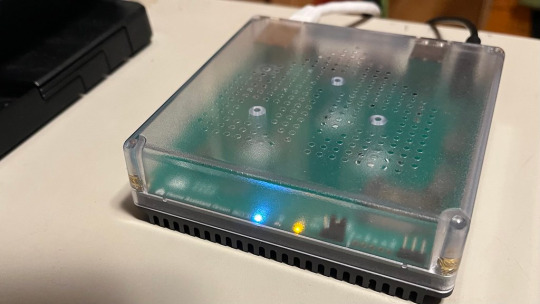
Angefixt hat mich unsere Balkonsolaranlage vor zwei Jahren. Die kam mit einem Shelly PM, um Ertrag und Einspeisung zu messen. Das ließ sich dann – eingebunden in das hausinterne WLAN – jederzeit in der App des Herstellers Shelly auf dem Handy ansehen. Neben Zählern und schaltbaren Steckdosen stellt Shelly auch Temperatur- und Feuchtigkeitssensoren her. Eine sehr praktische Sache, um den Überblick darüber zu haben, wie es mit der Luftfeuchtigkeit im Bad nach dem Duschen oder mit der Temperatur im Keller aussieht. Auch das lässt sich in der App von Shelly jederzeit anschauen.
Schon spannend, jederzeit derartige Daten im Blick zu haben. Der nächste Schritt war dann ein über eine schaltbare Steckdose in Betrieb nehmbarer kleiner Batteriespeicher (eigentlich für den Outdoor-Einsatz), um von diesem aus Handys etc. über Nacht Solar laden zu können. Mit der App sind einfache Automatisierungen möglich – immer von 13 bis 14 Uhr laden, beispielsweise. Das funktioniert gut, aber hinterließ bei mir den Wunsch, das doch etwas intelligenter verschalten zu wollen.
Gleichzeitig ist der Blick auf die Daten in der App prima, aber um damit etwas anfangen zu können, etwa für Vergleiche, ist eine Handy-App ein bisschen mühsam zu bedienen.
Im letzten Herbst bin ich dann auf „Home Assistant“ gestoßen. Das ist ein Open-Source-Softwarepaket, das einen Hub für Heimautomatisierung und „Internet of Things“ darstellt. Und das erstaunlich viel kann, fast beliebig erweiterbar ist und so weiter. Ich hatte mir das Paket – das einen Server im Haus-Netz aufsetzt – für meinen Windows-Rechner heruntergeladen, etwas damit herumgespielt, festgestellt, dass auch mein Internetradio und der Nokia-Stick für den Fernseher gefunden werden, und dann beiseite gelegt. Erstens, weil es doch alles etwas komplizierter ist, und zweitens, weil ich meinen Rechner nicht 24/7 laufen lassen wollte.
Die Überlegung, das Paket statt dessen auf einem Raspberry Pi laufen zu lassen, den ich eher 24/7 in Betrieb lassen würde, scheiterte dann daran, dass die bei mir herumliegenden Raspis nicht leistungsstark genug waren. Statt dessen bin ich darauf gestoßen, dass es passgenau Hardware gibt – namentlich „Home Assistant Green“. Das ist der oben abgebildete kleine Computer, der nichts anderes kann und macht, als Home Assistant laufen zu lassen.
Die Installation ist denkbar einfach: Ethernet und Strom anschalten, den Rechner ins Netz hängen und dann – nach etwas Installationswartezeit – unter „homeassistant.local:8123“ aus dem lokalen Netz auf die Weboberfläche von Home Assistant zuzugreifen. Dort können die verschiedenen „smarten“ Geräte eingebunden werden, zum Teil über spezialisierte Plugins und Add-ons. Was da an Daten zusammenkommt, ist dann teilweise erschreckend – auch die Bewegungssensoren meiner iOS-Geräte lassen sich einbinden, und schon habe ich mein ganz persönliches Bewegungsprofil …

Daten aus den Geräten können auf vielfältige Weise dargestellt werden – von schlichten Zahlen bis hin zu grafisch komplexeren Dingen (auch Grafana ließe sich als Add-on einbinden, das habe ich aber noch nicht ausprobiert). Zu allem, was einen Verlauf hat, gibt es automatische Verlaufsdiagramme. Und für häufige Anwendungsfälle (etwa den Energiefluss Netz/PV/Verbraucher) gibt es vorgefertige Übersichten und „Karten“. Sehr viel geht dabei in der Browser-Benutzeroberfläche; darunter liegen Konfigurationsskripte, die im Prinzip auch direkt verändert werden können.
Mit dem Zugriff auf die Skripte lässt sich allerdings auch viel Unsinn anstellen. Beispielsweise hatte ich etwas unvorsichtig eine Konfigurationsdatei verändert (letztlich, um das SSH-Modul zu aktivieren), was dann zur Folge hatte, dass „Home Assistant Green“ gar nicht mehr starten wollte. Zum Glück hat das Gerät für solche Fälle auch USB-Schnittstellen und einen HDMI-Ausgang. Damit landet man dann allerdings zunächst einmal nicht im unterliegenden Linux-System, sondern in einer Command Line, in der nur ein sehr eingeschränktes Befehlsset vorhanden ist. Gefunden habe ich dann zum Glück das Kommando „login“, das eine Shell für das Betriebssystem öffnet. Da konnte ich die vermurkste Konfigurationsdatei dann löschen und die Hardware wieder starten. (Also: nicht blauäugig mit Konfigurationsdateien herumprobieren, ohne zu wissen, was man tut …).

Abgesehen davon wirkt „Home Assistant“ jedoch recht robust. Dienste lassen sich einzeln neu starten, Fehler werden als fehlende Werte dargestellt, und die Anleitungen sind offensiv verlinkt und meist sogar halbwegs verständlich.
Nächster Schritt war für mich dann der Erwerb eines IR-Sensors zum Auslesen meines Stromzählers (bitShake SMR auf Tamota-Basis über MQTT …). Der lässt sich am Stromzähler befestigen, liest die dortige SML-Schnittstelle aus und gibt dann den aktuellen Stromverbrauch ins Hausnetz. Um die Werte nutzen zu können, musste ich zum einen die MQTT-Integration des Home Assistant in Betrieb nehmen (da war die Anleitung eher wenig hilfreich; letztlich musste an drei Stellen ein Nutzer/Passwort eingetragen werden) und zweitens herausfinden, wie Helfer-Templates funktionieren – die Daten kommen einheitslos an, und erst wenn ihnen über ein solches Template die Einheit „kWh“ und das Subsystem „Energy“ zugewiesen wird, können die Energie-Dashboards damit etwas anfangen. So richtig viel allerdings noch nicht: ohne PIN für den Zähler wird nur der kumulierte Verbrauchs- bzw. Einspeisewerte in kWh zurückgegeben, der sich entsprechend langsam ändert. Zeitlich höher aufgelöste Werte brauchen eine PIN, die ich hoffentlich vom lokalen Netzbetreiber bekomme. Erst dann ergibt das Energieflussdiagramm wirklich Sinn …
Das andere, was ich mit etwas Herumprobieren hingekriegt habe, was aber nur indirekt mit dem Home Assistant zu tun hat, ist das Einrichten einer dynamischen DNS-Zuweisung (mit Herumgebastle an den Router-Einstellungen). Das ermöglicht es, auf die Home-Assistant-Oberfläche auch von außerhalb des lokalen Netzes zuzugreifen, also z.B. unterwegs mit dem Handy, ohne zusätzliche Cloudlösungen nutzen zu müssen, die es ansonsten auch gibt. Meine dynamische DNS wollte ewig nicht funktionieren – bis ich herausgefunden habe, dass die Umleitung halt wirklich nur funktioniert, wenn ich von außen (z.B. aus dem LTE-Netz) darauf zugreife. Auch das klappt jetzt also.
Noch nicht wirklich reingefuchst habe ich mich in die Automatisierung. Das kommt dann als nächstes Vorhaben. Dafür gibt es bei Home Assistant eine eigene kleine Programmiersprache, die Sensoren mit Aktionen verknüpfen kann (wenn Zustand X, dann schalte Gerät Y ein – also z.B. meinen Batteriespeicher immer dann, wenn die Balkonsolar-PV optimal ist. Nur: was heißt das genau?). Und vielleicht fallen mir dann auch noch Anwendungsfälle für weitere schaltbare Steckdosen ein. Und dann bräuchte ich dringend noch …
… was ich sagen will: wer möchte, kann tief in die Mischung aus digitaler und dinglicher Welt eintauchen. Bisher scheue ich allerdings noch vor dem ganz großen Schritt hin zu smarten Heizkörperthermostaten, Rollläden, Toastern usw. zurück. Weil eigentlich gar kein Bedarf dafür da ist.
(Till Westermayer, zuerst veröffentlicht hier: blog.till-westermayer.de/index.php/2025/01/25/abenteuer-mit-home-assistant-green/)
#Till Westermayer#IoT#Internet of Things#Balkonsolaranlage#Shelly#Home Assistant Green#Stromzähler#Smart Home#Heimautomatisierung
6 notes
·
View notes
Text
PV Inverters Market Set to Surge: Global Forecast 2024-2032 Predicts Growth from $12.9B to $47.44B
The PV inverters market Growth is experiencing robust growth, driven by the escalating demand for solar energy solutions globally. Estimated at USD 12.9 billion in 2023, the market is projected to surpass USD 47.44 billion by 2032, exhibiting a remarkable compound annual growth rate (CAGR) of 18.5% during the forecast period from 2024 to 2032. This surge is primarily attributed to the increasing focus on renewable energy adoption, climate change mitigation, and the growing shift towards decarbonization across industries.
Download Sample Pages: https://www.snsinsider.com/sample-request/1336
A key factor driving this growth is the variety of PV inverter types available, including central, string, and micro inverters, each designed to meet specific power requirements. Central PV inverters, typically used in large-scale solar farms, dominate the utilities sector, while string inverters are favored in both residential and commercial applications for their flexibility and ease of installation. Micro inverters, known for optimizing energy output at the panel level, are gaining traction in the residential sector, particularly in regions where rooftop solar systems are becoming more prevalent.
The market is also categorized by product type, including central, string, micro PV inverters, and others, each contributing significantly to the overall market size. Moreover, advancements in smart grid technology and energy storage systems are expected to boost the integration of PV inverters into energy management systems, improving grid stability and energy efficiency.
Another driving force is the segmentation by application, which covers residential, commercial & industrial, and utility sectors. The residential sector is witnessing rapid growth due to declining costs of solar panels and increased government incentives, while commercial and industrial applications are expanding as businesses seek cost-effective and sustainable energy sources. Utility-scale projects continue to be a major contributor, especially in regions with vast solar energy potential.
Buy Now: https://www.snsinsider.com/checkout/1336
In terms of connectivity, the market is divided into standalone and on-grid systems. On-grid PV inverters are prevalent in regions with well-established grid infrastructure, while standalone systems are gaining traction in remote areas and developing regions.
Geographically, the Asia-Pacific region is leading the market, driven by large-scale solar projects in countries like China, India, and Japan. North America and Europe are also significant players, fueled by government policies and incentives promoting renewable energy adoption. As more regions invest in solar infrastructure, the PV inverters market is expected to witness unprecedented growth.
About Us:
SNS Insider is one of the leading market research and consulting agencies that dominates the market research industry globally. Our company's aim is to give clients the knowledge they require in order to function in changing circumstances. In order to give you current, accurate market data, consumer insights, and opinions so that you can make decisions with confidence, we employ a variety of techniques, including surveys, video talks, and focus groups around the world.
Contact Us:
Akash Anand – Head of Business Development & Strategy
Phone: +1-415-230-0044 (US) | +91-7798602273 (IND)
2 notes
·
View notes
Text
Arknights Spring Festival 2024 PVs
youtube
youtube
New Operators

Wanqing, 5* Welfare Standard Bearer Vanguard
If you come across farmland, be sure to watch your step.
Grain Buds, 5* Decel Binder Supporter
I used to manage the animals back at Dahuang City, so of course I'm in charge of you here.
Zuo Le, 6* Soloblade Guard (formerly known as Musha branch)
Good talents should be put to good use, by those who are most capable. Zuo Le will do his best.
Shu, 6* Limited Guardian Defender
You and I, we are but a drop in the basin that is our world.
Operator Skins Update








Total of 7 new skins, 5 new additions for the Made by 0011 brand and 2 new additions for the new Unveiling of Devotion brand
Made by 0011
Highmore's The Land With Me
Honeyberry Saturated Within Rain
Lin's Heavenly Mirage - L2D skin
Chongyue's Alighting - L2D skin
Purestream's Yearly Present - Event Reward skin
Unveiling of Devotion
Harmonie's Decoration
Arene's Dangerous Invitation
Purestream's skin is a reward from Trials for Navigator #4

Announced skin reruns
Series II 0011/Tempest skins (Ceobe, Waai Fu)
Series VII Vitafield skins (Pozëmka, Proviso, Mousse)
Nian's Unfettered Freedom
Manticore's Under A Veil
~104 other skins as part of Goodbye to the Old, Welcome the New edition of Rhodes Fashion Review
Operator Modules Update



All the new operators being part of branches with modules immediately get their modules
GUA-X module base effect increases Shu's healing amount by 15% on targets below 50% HP
MUS-X module base effect gives Zuo Le 25% Sanctuary when below 50% HP
DEC-X module base effect makes Grain Buds recover SP faster when there are enemies in her range
BEA-X module base effect makes Wanqing give +1 block count to the ally in front of him when his skill is active
Fighter Guard branch gets 2 module types
Module 1 given to Chongyue and Jackie
Module 2 given to Mountain, Indra, Flint, Dagda and Beehunter
Events and Stories

Here a People Sows, the next installment of the Yan-Sui storyline taking place in the agriculture city of Dahuang
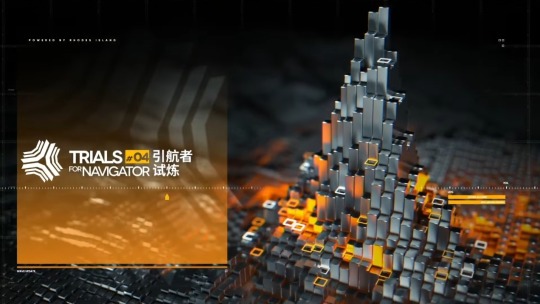
Trials for Navigator #4, scheduled after Here a People Sows



Operator Archives update for Shu, Qiubai, Wind Chimes, Cliffheart
Record Restore update for An Obscure Wanderer and Guiding Ahead
Misc Stuff
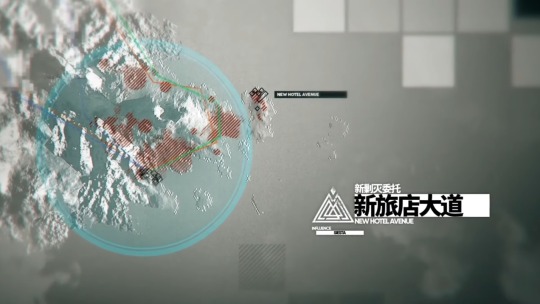
Annihilation #24 - New Hotel Avenue, annihilation mission with So Long Adele enemies and mechanics

Surtr, April and Arene added to recruitment
CN dialect voices for Shu and Zuo Le
CC ops/skins and past login event skins will start to be rereleased via side story event shops
Ops and skins available in the CC shop will not be removed, they are simply making them more accessible by giving players more options on how to get them
Bibeak and her tokens along with Hibiscus' Night Watcher skin will be available for purchase in the Here a People Sows event shop
When the event shop closes, the listed ops and skins will be moved to the certificates shop and will not be put in future side story event shops
Livestream Stuff
Showcased Shu, a 6* Guardian Defender Sui Sibling with a decent amount of support options in her kit
First talent makes her heals sow seeds on the tile the target ally is on and the 4 adjacent tiles which grants passive healing per second and a certain % of Sanctuary
Second talent increases all operators Max HP if there are 3 ops of different classes deployed, increases all operators ASPD if there are 3 ops of the same class deployed, and increases all operators ATK and makes them gain 1 SP every few seconds if there are 4 [Sui] operators in the team
Skill 1 is a generic "next attack heals nearby ally if below certain % HP"
Skill 2 makes her stop attacking to focus on healing 2 nearby allies at once with a modified attack interval, increases her ATK and block count, and boosts the power of her first talent
Skill 3 increases her healing range and her ATK and allows her to heal and attack at the same time, during skill duration seeded tiles grant allies an ATK and ASPD boost when there are ground enemies on the seeded tiles, additionally enemies walking on seeded tiles will be marked and have the following effect: after going a certain distance away from the first seeded tile they walk on, the marked enemy will immediately be teleported back to that tile
Showcased Zuo Le, a 6* Soloblade Guard that focuses on SP recovery and activating his skills as much as possible
First talent grants him a unique Tenacity effect, giving him more ASPD and SP recovery as his HP lowers
Second talent gives him a chance to gain 1 SP when attacking and the chance increases when he is below a certain % of HP
Skill 1 increases the damage of the next attack, when below a certain % of HP this skill hits twice and when below a lower % of HP this skill hits thrice instead, able to hold charges
Skill 2 makes him immediately lose a certain % of current HP and gains a certain amount of Barrier upon skill activation, during skill duration he has increased ATK and block count and attacks all enemies equal to block count, loses the Barrier when skill ends
Skill 3 makes him immediately perform a number of slashes attacking enemies on the tile in front of him and ends the skill with a big slash that deals more damage and stuns the enemies, any healing gained from the trait during this skill is instead converted into a Barrier
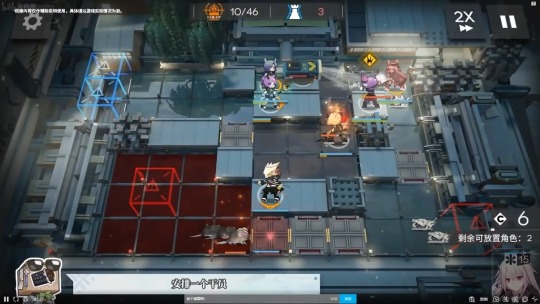
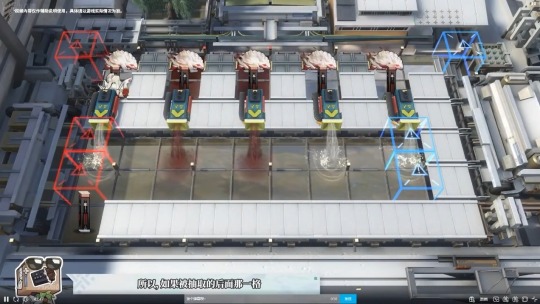
Showcased the event mechanic, agriculture water tiles that can be polluted by enemies and deals damage to your allies, pollution can spread to adjacent agriculture tiles
The water tiles can be purified by pumping clean water into the polluted tiles and placing ops behind the pumps can help purify water faster, but at the same time take care not to let enemies pollute the water source as the pumps can also pump out polluted water


Announced a new anime tie-in bundle that contains various goodies including interactive furniture that can play music and a new Ch'en skin, also announced a rerun of the Exusiai anime tie-in bundle
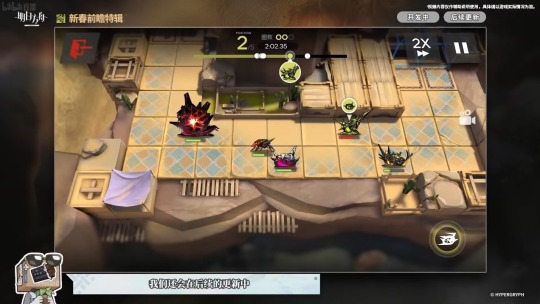
Showcased some of the new RA2 stuff
More in-field stories and major UI changes throughout the whole gamemode
Ability to catch wildlife with special equipment and put them in your base
Certain nodes adjacent to your base can be entered to construct buildings in without needing to spend action points on said nodes, also showcased the ability to undo your placements before saving it
Food buffs are no longer permanent and can wear off after a few days
Ability to load saves from previous days
Teased plans for Originium Slug Racing to be added in a future update
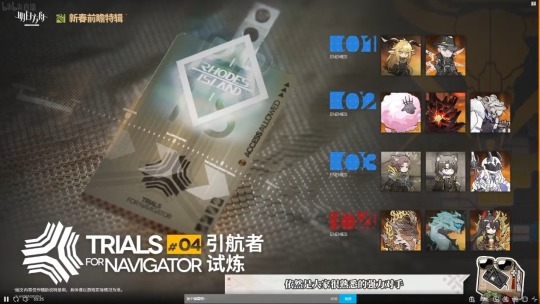
Showed the Trials for Navigator #4 boss lineup

Showed some collab items for the R6 side in the upcoming Rainbow Six collab event
Announced a small Arknights × Ex Astris collab where you get skins in Ex Astris and furniture in Arknights
8 notes
·
View notes
Text
The Ultimate Step-by-Step Guide to Mastering Solar Panel Installation in 2024

Ready to go solar in 2024? Our ultimate guide walks you through every step of solar panel installation. We cover everything from choosing the right panels and equipment to expert tips on installation and maintenance. This guide is perfect for DIY enthusiasts and professionals alike, ensuring you harness solar energy efficiently and effectively. Start your journey to sustainable living today with our comprehensive guide.
#Solar Installation 2024#How to Install Solar Panels at Home#PV Installation 2024#Solar Panel Installation In 2024#Solar Panel Installation Companies#Solar Panel Services
0 notes
Text
Brazil reaches 40 GW of installed solar photovoltaic (PV) capacity, says Absolar

Brazil has just surpassed the historical mark of 40 gigawatts (GW) of installed photovoltaic solar energy capacity, the Brazilian Solar Energy Association (Absolar) informed Broadcast (real-time news system of the State Group). The volume includes large solar plants and own energy generation systems on roofs, facades and small plots of land.
According to the entity’s mapping, the participation of solar sources is currently equivalent to 17.4% of the Brazilian electrical matrix. In 2024 alone, the solar sector will already add 3 GW to the country. Since 2012, the solar source has contributed to Brazil more than R$ 189.4 billion in new investments, more than R$ 53 billion in income to public coffers and generated around 1.2 million reais. millions of green jobs accumulated.
According to Absolar calculations, the photovoltaic sector has already avoided the emission of 48.9 million tons of CO2 in electricity generation, thanks to the clean and renewable generation of the current 40 GW of solar sources active in the country. “In addition to accelerating the decarbonization of economic activities and helping to combat global warming, solar sources play an increasingly strategic role in the competitiveness of productive sectors, energy independence and the prosperity of nations,” said the president.
Continue reading.
#brazil#brazilian politics#politics#economy#environmentalism#renewables#energy#mod nise da silveira#image description in alt
3 notes
·
View notes
Text
Which inverter is best for solar in 2024?

The best inverter for solar depends on the capacity of the solar panel. If you are looking for an inverter for solar then this article will help you find the best inverter for solar. So in this article, I am going to inform you about the best inverter for solar in 2024.
Benefits of a Solar Inverter
There are many benefits of the solar inverter. Some of the main benefits of solar inverter are discussed here.
Solar inverter technology provides energy independence, reduces the reliance on conventional power, contributes to environmental sustainability and durability, and lowers electricity bills. It also promotes clean energy and minimizes carbon footprints.
youtube
Types of solar inverters
Mainly there are 3 types of solar inverters which are available in India. On-grid solar inverter, off-grid solar inverter, and hybrid solar inverter. Let’s discuss them below.
1. On grid solar inverter: On grid solar inverter is a grid-connected solar inverter. It is dependent on the grid connection which means the electricity will be supplied through the inverter by the electricity board. If there is electricity available by the electricity board it will work, but if there is no electricity available by the electricity board then it will not work. The advantages of on grid inverters are that they are the most commonly used solar inverters that are adopted by customers due to its working philosophy, it will cut the whole load during peak hours in an office, no battery storage is required, no maintenance cost, and no generation loss.
2. Off grid solar inverter: Off grid solar inverter is a battery-based solar inverter. It is not dependent on electric grids, but it has a battery to store the excess electricity. It is installed in locations where electricity supply is less or not available. It can supply power in rainy or windy days. Off grid solar inverter is used for battery charging and load sharing with the availability of the PV system and feed load by the charged battery when there is no availability of the PV system.
3. Hybrid solar inverter: The hybrid solar inverter is a combination of both on-grid and off-grid solar inverters. It has multiple sources to supply electricity such as solar/PV, grids, storage batteries, and hydro plants. It is a complicated system in which synchronization is required between all the connected systems and loads.
Best inverter for solar in 2024
The best inverter for solar in 2024 is the “hybrid solar inverter”. As mentioned above the hybrid solar inverter is a combination of both on-grid and off-grid solar inverter. It has battery storage which can store the excess electricity for later use. The hybrid system works with the availability and the non-availability of electricity.
Conclusion
I hope you got the answer. If you are looking for an inverter then you should consult the best solar inverter manufacturer in your city. They will guide you and help you to choose the best inverter for solar.
3 notes
·
View notes
Text
Grid 2.0: How Distributed Energy Generation Is Transforming Infrastructure
The global distributed energy generation market size was valued at $360.4 billion in 2023 and is projected to reach a staggering $1,403.5 billion by 2033, growing at a CAGR of 14.6% from 2024 to 2033, according to a new report published by Allied Market Research. This significant growth underscores the global shift toward decentralized and sustainable energy systems.

🌍 What is Distributed Energy Generation?
Distributed energy generation (DEG) refers to the use of small-scale energy systems located close to where energy is consumed — such as homes, commercial buildings, or industrial facilities. These systems often utilize renewable sources like solar or wind and may also include fuel cells, micro-turbines, or reciprocating engines. DEG systems can operate independently or be connected to the larger power grid, offering flexibility, efficiency, and resiliency.
🔄 Market Dynamics Driving Growth
A variety of market forces are contributing to the rapid rise of the distributed energy generation market:
✅ Government Regulations & Emission Reduction Targets
Governments around the globe are implementing strict regulations and setting ambitious GHG emission targets, which promote the deployment of clean energy technologies. Incentives, tax rebates, and supportive policies are fostering a favorable environment for DEG systems.
✅ Rising R&D and Cost Advantages
Increasing investment in research and development is leading to technological innovations that enhance the performance and reliability of distributed systems. Moreover, DEG systems are often more cost-effective than traditional centralized energy production, especially when factoring in reduced transmission losses and lower infrastructure costs.
⚠️ Market Challenges
Despite promising growth, the market faces a few headwinds:
Policy Uncertainty: Inconsistent regulations across regions can create barriers to widespread adoption.
Upfront Investment Costs: Although DEG reduces long-term costs, high initial installation costs can deter smaller businesses and residential users.
Grid Integration Issues: Technical challenges related to integrating distributed sources into legacy power grids.
Cybersecurity Concerns: With the rise of smart grids and IoT integration, concerns around data privacy and grid security are becoming more prominent.
🚀 Market Opportunities
There is vast potential for market players who can navigate these challenges:
Digitalization and IoT: The integration of smart meters, real-time analytics, and remote monitoring tools are opening new doors for efficient energy management.
Prosumers and Community Energy Projects: End-users are increasingly generating their own power and sharing it through microgrids, encouraging local energy independence.
Innovative Business Models: Energy-as-a-Service (EaaS), peer-to-peer trading, and virtual power plants are reshaping how energy is produced and consumed.
📊 Market Segmentation Insights
The distributed energy generation market is segmented by technology, end-use industry, and region, each playing a distinct role in shaping the landscape.
🔧 By Technology:
Fuel Cells: Dominated the market in 2023 due to their efficiency and low emissions.
Solar PV: Expected to witness the highest CAGR of 17.6% during the forecast period, supported by falling costs and rising environmental awareness.
Other technologies include micro-turbines, reciprocating engines, micro-hydropower, wind turbines, and combustion turbines.
🏭 By End-Use Industry:
Industrial Segment: Held the largest market share in 2023, fueled by heavy energy demand and the need for reliable supply.
Commercial Segment: Expected to grow fastest at a CAGR of 16.3%, driven by energy efficiency goals and green building initiatives.
Residential Segment: Also gaining traction as homeowners seek to reduce utility bills and carbon footprints.
Download PDF Brochure: https://www.alliedmarketresearch.com/request-sample/A13784
🌐 By Region:
Asia-Pacific: Dominated the global market in 2023 and is forecast to be the fastest-growing region. Countries like China, India, and South Korea are leading due to population growth, urbanization, and strong governmental support.
North America & Europe: Continue to see steady growth, supported by energy transition policies and advanced grid infrastructure.
LAMEA: Emerging as a potential growth area, especially in Latin America and Africa, where energy access and reliability are critical.
🏢 Key Players in the Market
The DEG market is consolidated with a few major players holding significant shares. Key companies include:
Siemens
General Electric
Mitsubishi Electric Corporation
Schneider Electric
Caterpillar Power Plants
Doosan Corporation
Vestas Wind Systems A/S
Rolls-Royce Power Systems AG
Toyota Turbine and Systems Inc.
Capstone Turbine Corporation
These players are leveraging strategic partnerships, technological innovation, and geographic expansion to stay competitive in a rapidly evolving market.
🔚 Conclusion
The global distributed energy generation market is poised for explosive growth, reaching an estimated $1.4 trillion by 2033. As the world moves towards cleaner, decentralized, and more efficient power systems, DEG technologies will play a central role in shaping the future of energy. Innovations in solar PV, fuel cells, and IoT-based grid systems, combined with policy support and rising awareness, are expected to accelerate adoption across industries and regions. 🌎⚡
Queries:
Q1. What are the key factors boosting the Distributed Energy Generation Market?
Increased environment awareness, government policies, and green house gas emission reduction targets are the key factors boosting the Distributed Energy Generation Market growth.
Q2. What is the estimated industry size of Distributed Energy Generation Market?
The global distributed energy generation market size was valued at $360.4 billion in 2023 and is projected to reach $1,403.5 billion by 2033, growing at a CAGR of 14.6% from 2024 to 2033.
Q3. What are the most established players of the Distributed Energy Generation Market?
Key players in the distributed energy generation market include Siemens, General Electric, Mitsubishi Electric Corporation, Schneider Electric, Caterpillar Power Plants, Doosan Corporation, Vestas Wind Systems A/S, Rolls-Royce Power Systems AG, Toyota Turbine and Systems Inc., and Capstone Turbine Corporation.
Q4. What are the main opportunity of Distributed Energy Generation Market?
Application in hybrid energy systems is the opportunity to the distributed energy generation Market growth.
Q5. What segments are covered in Distributed Energy Generation Market?
The distributed energy generation market is segmented on the basis of technology, end-use industry, and region. By technology, the distributed energy generation market is segmented into micro-turbines, combustion turbines, micro-hydropower, reciprocating engines, fuel cells, wind turbines, solar PV, and others. By end-use industry, the market is divided into residential, commercial, and industrial. Region-wise, the market is studied across North America, Europe, Asia-Pacific, and LAMEA.
Q6. What is the restraint factors for Distributed Energy Generation Market?
High installation cost and negative environmental effect at the end hamper the growth of distributed energy generation Market growth.
Q7. Which is the fasting growing segment on the basis of end-use industry in Distributed Energy Generation Market?
Commercial is the fasting growing segment on the basis of end use in distributed energy generation Market.
About Us
Allied Market Research (AMR) is a full-service market research and business-consulting wing of Allied Analytics LLP based in Portland, Oregon. Allied Market Research provides global enterprises as well as medium and small businesses with unmatched quality of “Market Research Reports” and “Business Intelligence Solutions.” AMR has a targeted view to provide business insights and consulting to assist its clients to make strategic business decisions and achieve sustainable growth in their respective market domain.
Pawan Kumar, the CEO of Allied Market Research, is leading the organization toward providing high-quality data and insights. We are in professional corporate relations with various companies and this helps us in digging out market data that helps us generate accurate research data tables and confirms utmost accuracy in our market forecasting. Each and every data presented in the reports published by us is extracted through primary interviews with top officials from leading companies of domain concerned. Our secondary data procurement methodology includes deep online and offline research and discussion with knowledgeable professionals and analysts in the industry.
0 notes
Text
Connector for PV System Market Outlook 2025–2032: Emerging Trends, Solar Integration Solutions, and Strategic Insights
Global Connector for PV System Market size was valued at US$ 1.89 billion in 2024 and is projected to reach US$ 3.47 billion by 2032, at a CAGR of 9.1% during the forecast period 2025-2032. This growth trajectory is supported by expanding solar installations worldwide, with global PV capacity expected to surpass 2.5 TW by 2030 according to industry projections.
PV connectors are specialized electrical components designed for solar energy systems, facilitating secure and efficient connections between photovoltaic modules, inverters, and other system components. These connectors must meet stringent safety standards (such as IEC 62852 and UL 6703) due to their critical role in high-voltage DC applications. The market primarily offers two product categories: below 10AWG connectors for residential applications and 10AWG and above connectors for commercial/utility-scale projects.
Market expansion is driven by renewable energy policies like the US Inflation Reduction Act (allocating USD 369 billion for clean energy) and the EU’s Net-Zero Industry Act targeting 600 GW solar capacity by 2030. While China’s Renewable Energy Law continues to stimulate domestic demand, recent supply chain innovations from key players like Staubli and Amphenol are addressing critical challenges in connector durability and weather resistance. The Asia-Pacific region currently dominates the market with over 45% revenue share, reflecting China’s leadership in solar panel production and Japan’s mandate for residential PV installations starting 2025.
Get Full Report with trend analysis, growth forecasts, and Future strategies : https://semiconductorinsight.com/report/connector-for-pv-system-market/
Segment Analysis:
By Type
10AWG and Above Segment Dominates Due to High Power Transmission Requirements in Large-Scale PV Installations
The market is segmented based on type into:
Below 10AWG
Subtypes: MC4, MC4-EVO2, and others
10AWG and Above
By Application
PV System Segment Leads Due to Rapid Growth in Solar Energy Installations Worldwide
The market is segmented based on application into:
PV System
Subtypes: Residential, Commercial, and Utility-scale
Others
By Material
Copper-Based Connectors Dominate Market Due to Superior Conductivity and Durability
The market is segmented based on material into:
Copper
Aluminum
Composite Materials
By End User
Utility-Scale Projects Account for Major Share Due to Large-Scale Solar Farm Deployments
The market is segmented based on end user into:
Utility-Scale Solar Projects
Commercial Installations
Residential Solar Systems
Industrial Applications
Regional Analysis: Connector for PV System Market
North America The North American market is experiencing robust growth driven by strong policy support and increasing solar energy adoption. The Inflation Reduction Act of 2022, which allocates $369 billion for clean energy initiatives, has significantly boosted demand for PV connectors through tax credits and manufacturing incentives. The U.S. solar market installed 32.4 GW of capacity in 2023, creating substantial demand for high-quality connectors that meet UL and NEMA standards. However, supply chain challenges and stringent certification requirements continue to pose challenges for manufacturers. The region is also witnessing a shift toward smart connectors with monitoring capabilities to enhance system efficiency, particularly in large-scale utility projects.
Europe Europe’s connector market is being reshaped by the EU’s Net-Zero Industry Act and ambitious renewable energy targets, including 600 GW of solar capacity by 2030. Countries like Germany, Spain, and the Netherlands lead in rooftop solar installations, driving demand for MC4 and other standardized connectors. The market is increasingly focused on recyclable materials and modular designs to align with circular economy principles, though dependence on Asian suppliers remains a constraint. Recent trade policies aim to reduce this reliance by supporting local production, particularly for components used in residential and commercial PV systems. Safety certifications such as TÜV and IEC remain critical for market entry.
Asia-Pacific As the world’s largest PV connector market, Asia-Pacific accounts for over 60% of global demand, primarily fueled by China’s massive solar deployments. China’s 14th Five-Year Plan targets 1,200 GW of renewable capacity by 2030, with connectors benefitting from economies of scale in domestic manufacturing hubs. India’s solar installations reached 18 GW in 2023, driving demand for cost-effective solutions, though price competition has intensified. Southeast Asian markets are emerging as manufacturing alternatives to China, offering lower labor costs. A key challenge is the prevalence of counterfeit connectors in price-sensitive markets, prompting stricter quality enforcement in countries like Vietnam and Malaysia.
South America South America presents a high-growth but volatile market, where Brazil and Chile lead solar adoption through auctions and distributed generation policies. Brazil installed 12 GW of solar in 2023, with connectors benefiting from localized assembly to avoid import tariffs. However, inconsistent grid infrastructure and currency fluctuations hinder long-term investments. The region shows preference for weather-resistant connectors suited for tropical climates, though adoption of advanced technologies lags behind global standards due to budget constraints. Recent trade agreements with Chinese manufacturers have improved component affordability for utility-scale projects.
Middle East & Africa The MEA region is transitioning from oil dependence to solar, with ambitious projects like Saudi Arabia’s 40 GW NEOM initiative and UAE’s 5 GW Mohammed bin Rashid Al Maktoum Solar Park. Demand focuses on high-temperature tolerant connectors for desert environments, with IP68 ratings becoming standard. While the Gulf states drive premium segment growth through tenders, Sub-Saharan Africa relies on off-grid solutions using simpler, lower-cost connectors. Financing gaps and underdeveloped supply chains limit market potential outside major economies, though regional partnerships with Chinese suppliers are gradually improving component availability.
MARKET OPPORTUNITIES
Emerging Bifacial Solar Technologies Create New Connector Requirements
The rapid adoption of bifacial solar modules, projected to capture over 35% market share by 2026, presents innovative connector opportunities. These advanced systems generate power from both sides, requiring specialized junction solutions that accommodate dual power inputs while maintaining weather resistance. Leading manufacturers are developing asymmetric connector designs with enhanced current-carrying capacities to optimize bifacial system performance. This technological shift enables premium product positioning and creates new revenue streams for connector suppliers with first-mover advantages.
Floating Solar Installations Demand Marine-Grade Solutions
The floating photovoltaic market, expected to grow at 15% CAGR through 2030, necessitates connectors with exceptional corrosion resistance and waterproof capabilities. Saltwater environments and constant wave action create uniquely challenging conditions that standard PV connectors cannot reliably withstand. This niche presents opportunities for specialized connector systems featuring stainless steel components, enhanced sealing technologies, and UV-stabilized polymers. Early adopters in this segment command significant pricing premiums while establishing technical barriers to entry.
CONNECTOR FOR PV SYSTEM MARKET TRENDS
Global Shift to Renewable Energy Driving Connector Demand
The photovoltaic connector market has experienced accelerated growth due to the global transition toward renewable energy. With solar installations projected to reach 600 GW in Europe alone by 2030, the need for reliable, high-performance PV connectors has become paramount. Recent technological advancements in connector designs now feature enhanced weather resistance and power transmission capabilities, crucial for modern solar arrays. While the market continues to expand, manufacturers are focusing on improving connection durability to withstand extreme environmental conditions – a critical factor as installations move into more demanding climates.
Other Trends
Government Policy Support
Policy initiatives worldwide are significantly influencing market dynamics. China’s Renewable Energy Law, established in 2006, continues to stimulate domestic solar adoption, with connectors playing a vital role in system integrations. Similarly, the US Inflation Reduction Act allocated $369 billion toward clean energy, indirectly boosting connector demand through increased solar deployments. Japan’s mandate for solar panels on new buildings by 2025 will likely create localized demand surges for PV components, including specialized connectors designed for residential applications.
Technological Standardization and Safety Considerations
The industry has seen increased standardization of connector specifications to ensure compatibility and safety across global markets. Modern PV connectors now frequently incorporate touch-proof designs and IP68-rated waterproofing, addressing critical installation concerns. However, challenges remain in balancing cost-efficiency with these enhanced safety features, particularly as the market expands into price-sensitive developing regions. Recent product launches demonstrate a trend toward modular designs that simplify maintenance while maintaining high current-carrying capacities suitable for next-generation solar panel outputs.
COMPETITIVE LANDSCAPE
Key Industry Players
Strategic Partnerships and Product Innovation Drive Market Competition
The global connector for PV system market exhibits a competitive yet fragmented landscape, with established multinationals and emerging regional players vying for market share. STAUBLI maintains its leadership position, holding approximately 18% of the global market share in 2024 due to its patented Multi-Contact technology and extensive distribution network across Europe and North America.
Amphenol Industrial and Phoenix Contact follow closely, collectively accounting for nearly 25% of market revenue. Their dominance stems from continuous R&D investments, with Phoenix Contact launching its SUNCLIX rapid shutdown connectors in response to evolving safety regulations in the US market. Meanwhile, Amphenol’s Helios H4 connector series has gained significant traction in utility-scale solar projects.
The market landscape is further characterized by aggressive expansion strategies from Asian manufacturers. Chinese players like Anhui Zhidian and TONGLIN have captured 12% of global shipments through cost-effective solutions, though their market penetration remains limited in regulated Western markets. These companies are actively pursuing international certifications to overcome trade barriers while doubling down on domestic production capacity.
European connector specialists such as Weidmueller and Lumberg Holding counter price competition through technological differentiation, focusing on smart connectors with integrated monitoring capabilities. Their strategy aligns with the EU’s push for advanced PV components under the Net-Zero Industry Act. Recent industry movements include strategic acquisitions, with TE Connectivity acquiring smaller specialists to bolster its renewable energy portfolio.
List of Key Connector for PV System Companies Profiled
STAUBLI (Switzerland)
Amphenol Industrial (U.S.)
Phoenix Contact (Germany)
Lumberg Holding (Germany)
Weidmueller (Germany)
Molex (U.S.)
TE Connectivity (U.S.)
CNC TECH (China)
Anhui Zhidian (China)
Yitong PV Science (China)
TONGLIN (China)
Jiangsu Haitian (China)
QC Solar (China)
Renhe Solar (China)
Learn more about Competitive Analysis, and Forecast of Global Connector for PV System Market : https://semiconductorinsight.com/download-sample-report/?product_id=108096
FREQUENTLY ASKED QUESTIONS:
What is the current market size of Global Connector for PV System Market?
-> Connector for PV System Market size was valued at US$ 1.89 billion in 2024 and is projected to reach US$ 3.47 billion by 2032, at a CAGR of 9.1% during the forecast period 2025-2032.
Which key companies operate in Global Connector for PV System Market?
-> Key players include STAUBLI, Amphenol, Phoenix Contact, TE Connectivity, Weidmueller, and Molex, with STAUBLI holding 12% market share in 2024.
What are the key growth drivers?
-> Key drivers include global solar capacity expansion (growing at 8.3% CAGR), government renewable energy policies, and increasing demand for high-efficiency connectors.
Which region dominates the market?
-> Asia-Pacific dominates with 45% market share, led by China’s aggressive solar targets (117 GW capacity by 2025), while Europe is the fastest growing region (13.2% CAGR).
What are the emerging trends?
-> Emerging trends include smart connectors with monitoring capabilities, rapid shutdown compliant solutions, and waterproof connectors for floating PV systems.
Browse Related Reports :
CONTACT US:
City vista, 203A, Fountain Road, Ashoka Nagar, Kharadi, Pune, Maharashtra 411014 +91 8087992013 [email protected]
0 notes